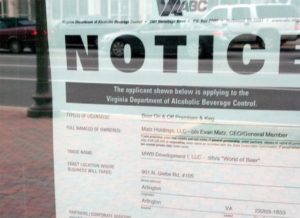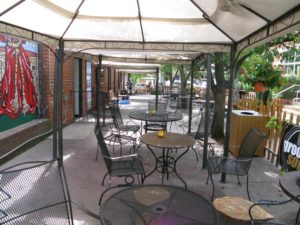
Editor’s Note: This sponsored column is written by Nick Anderson, beermonger at Arrowine (4508 Lee Highway).
Today’s column touches on a sensitive subject related to last week’s look at Lambic beers. That would be the subject of brettanomyces, the wild yeast that makes the spontaneous fermentation of Lambic happen. Brett is a touchy topic as many tend to either love or hate its presence in beer. In fact, brett is the dividing line that keeps many wine drinkers from appreciating beer, as its presence in wine is a basic, inherit fault. In beer however, brett has a long history of use and is a major factor in the profile of many beer styles.
In beer or wine, brettanomyces imparts notes as varied as ‘band-aid’, ‘barnyard’, ‘horse stable’, but are widely recognized by beer fans as ‘funk’. In wine these notes are a fatal flaw (though some wineries and regions hold on to brett as a link to a style’s past; or ‘the way things used to be’) that can kill the drinker’s perception of the fruit and hinder a wine’s ability to age. In most beers as well, brett can ruin what should otherwise be a clean, refreshing drink. Only in beers where brett is intended to be there and is a crucial part of the beer’s style does it even have a chance of making sense.
Beyond Lambic, Belgian beers prominently featuring brettanomyces include Flanders Red Ale (Duchess de Bourgogne, DeProef Zoetzur, Vichtenaar, Monk’s Café, Rodenbach Grand Cru) which uses lactobacillus for a more sour feel and are often aged in oak to create a very ‘wine-like’ style of beer; Oud Bruin (Liefman’s Goudenband, Petrus Oud Bruin), with their smooth malty tones balancing the funk; and the singular Trappist Ale from Orval, unique among the Trappist breweries for not only being the lone beer among them to use brett but to specifically add it to the beer as it’s bottled. This is the main factor in the ‘snowflake’ perception that no two bottles of Orval are alike; it’s hoppy character and funky notes are an adventure every time you crack one open.
With the emergence of Belgian-style beers in the U.S., American craft brewers started experimenting with brett as well. Ommegang used brett to good effect in their Ommegeddon and Biere de Mars special releases. West Coast IPA producers Russian River and Port/Lost Abbey have legendary lines of Belgian-style Ales that use brett one way or another. Tomme Arthur of Port Brewing/Lost Abbey actually went to Belgium a few years back to create a Wild Ale/IPA hybrid with Dirk Naudts of DeProef Brewery.





